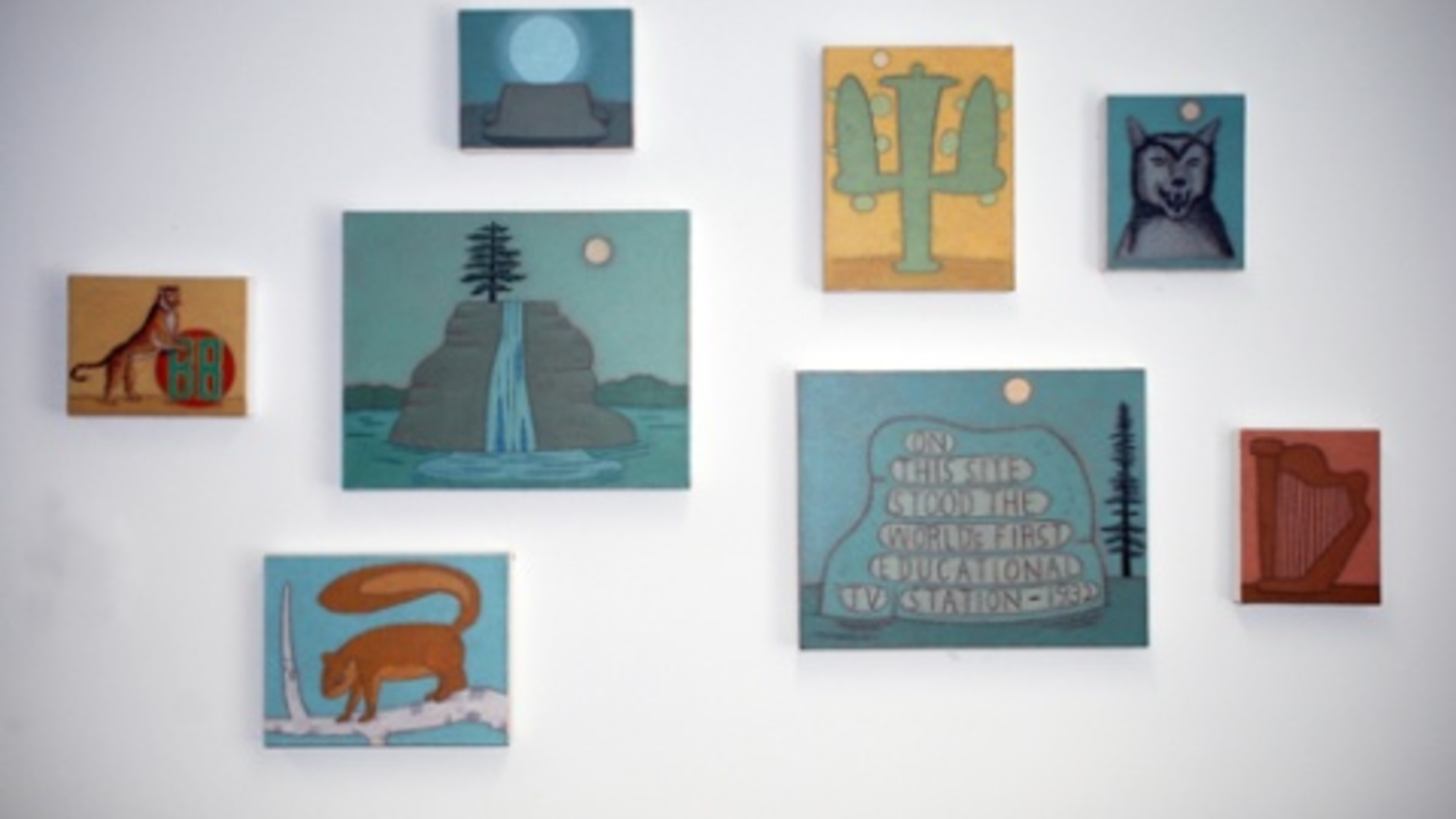Comprised of 14 paintings reflecting the history and future of Stuit Hall.
John Dilg received a BFA in Painting and Filmmaking from the Rhode Island School of Design. He is the recipient of a Fulbright Grant to India, a National Endowment for the Arts Individual Artist Fellowship,and three Residency Fellowships at the Yaddo Foundation. His work is represented in the collections of the Museum of Contemporary Art, Chicago; the Figge Museum of Art; Museo de Arte Contemporáneo de Villafamés, Spain; the University of Iowa Museum of Art; the Arkansas Art Center and others. He has been a member of the University of Iowa School of Art and Art History faculty since 1975.
In his artist’s statement, John states: “I like to represent the iconic in my paintings and a sense of the quiet of time passing. To this degree my imagery is representational, though not as fully expressive or descriptive renderings. Rather, for many viewers the images are reminders of something seen before or elsewhere under different terms or conditions. And the titles are important—the image and word-sound producing a further meaning, or willfully extending the enigmatic.”
The paintings in this series form an iconography based on Stuit Hall’s history blended with Dilg’s personal history of the space. From 1973 to 1999 the School of Art and Art History graduate program in painting and drawing occupied this building. Previously, it was home to the School of Music and was referred to as “Old Music” by the UI community. The paintings depict the stories of the building and represent its metamorphosis in purpose through the years. Certain paintings are more direct recordings of the building’s heritage. Muse, in its harp shape, recalls the musical heritage of the building. The seemingly straightforward portrait of the building found in Old Music Building has been manipulated: the front of the building has been altered and the harp and palette positioned as flags suggest the building’s past while the image of Psyche as a weather vane heralds its future. We Were Here, an artist’s palette embedded with an all-seeing eye, lists the grad students whose studios were housed in the building and the faculty who taught here. Two other paintings make direct reference to art faculty intimately involved in the building: BB is rendered in the colors used by Emeritus Professor of Art, Byron Burford, on his signature circus truck and The Memory Tree recalls the work of a former colleague, Gelsy Verna, by including referential images from her Haitian-American iconography. The other paintings in the series are more poetic, calling up in the viewer’s mind images of iconic power. Many of these are drawn from Dilg’s personal interest in “a contemporary landscape, where the romantic and the neo-gothic are allies of the virtual and where humor and the sinister coexist.” Red Squirrel, White Birch, is a reconfiguration of a thrift-store painting, and the wolf in The Lycanthrope illustrates the meaning of its title. The Island, The Bridge and Multnomah (referencing the Columbia River Gorge) are painted from Dilg’s personal memories and serve as idiosyncratic souvenirs of his reflections on nature.
The new use of the building as it houses Clinical Psychology is also referenced in Dilg’s gentle, nuanced visual images. The regenerative symbol of the moon presented in Luna, the ambiguous imagery in Tell Us What You See (recalling either a Rorschach inkblot or simply a landscape of pine trees reflected in a lake), and finally the image of Psyche reflects the focus of the building’s current occupants.
Watch an interview with artist John Dilg about the Stuit Hall Collection.

